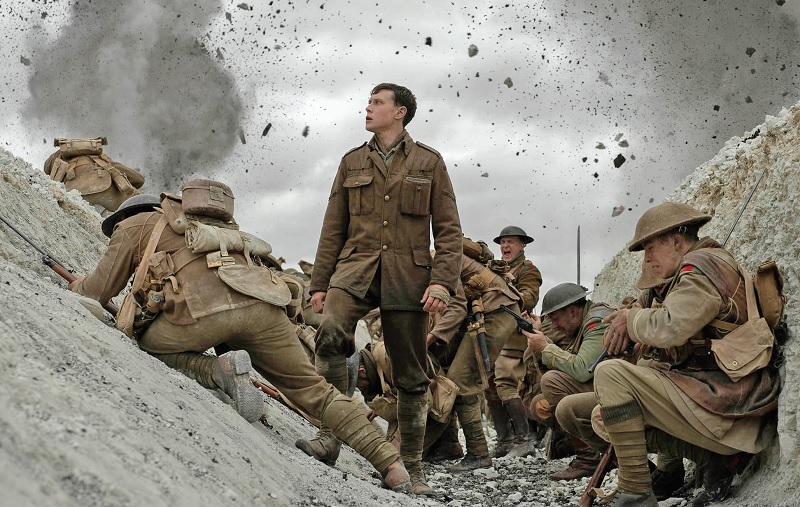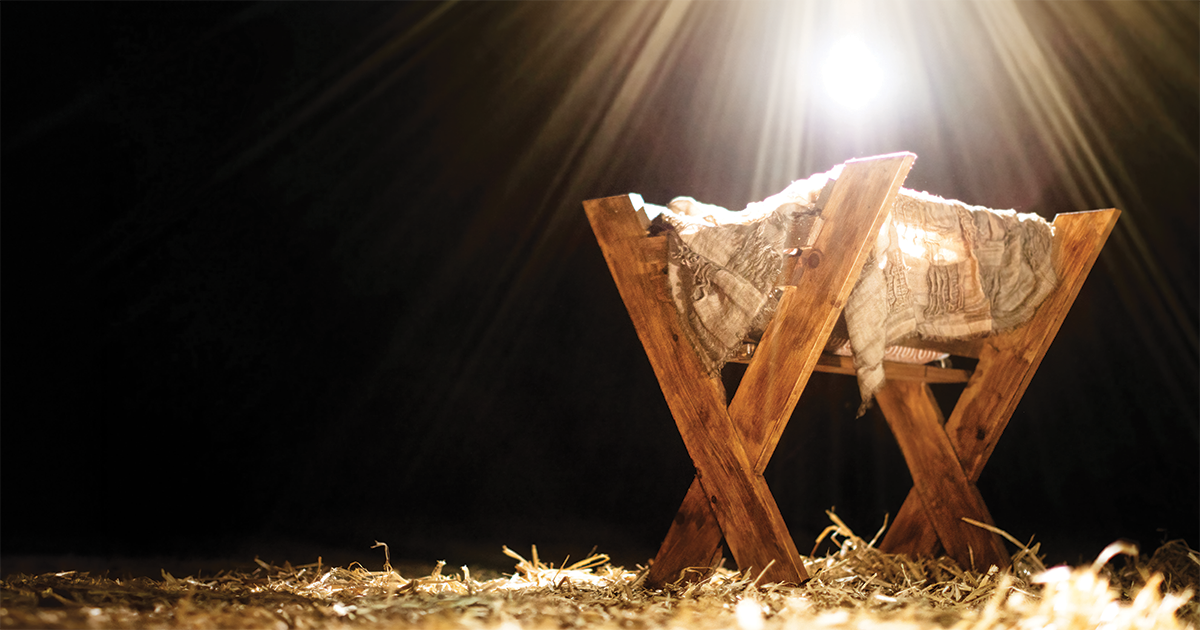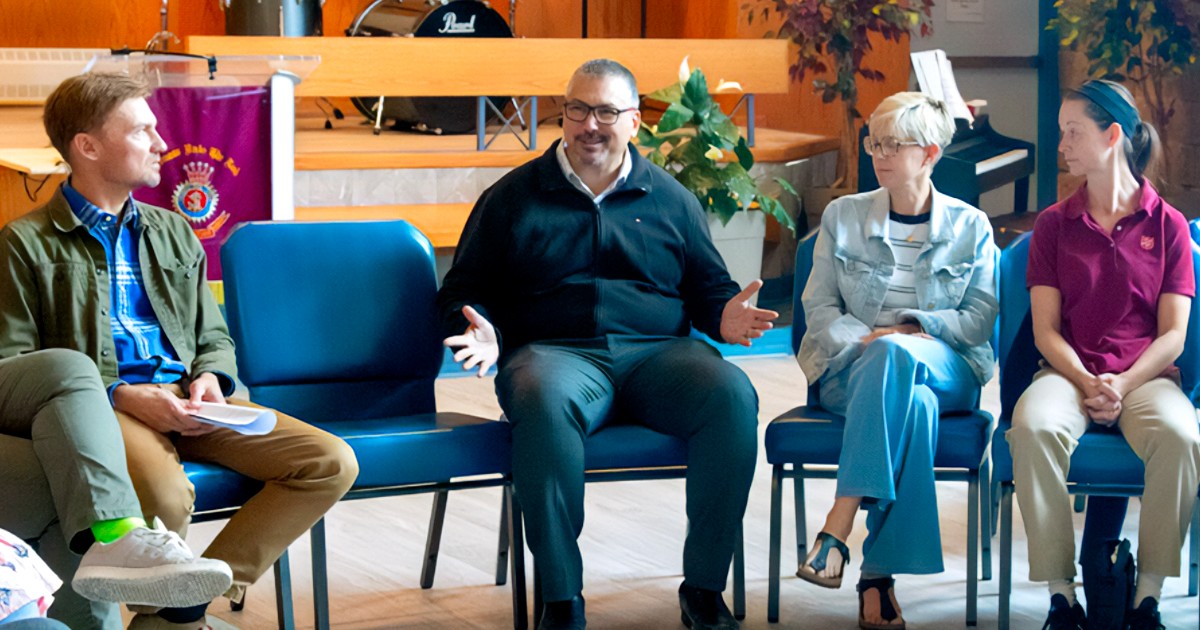It's the spring of 1917. For more than two years, German, British and French armies have been mired in unremitting trench warfare on the western front, where thousands of soldiers have perished in bloody attacks, and advances have been measured in metres.
When the Germans pull back to new positions on the Hindenburg Line, British forces seize the opportunity to prepare a massive assault that will end the war once and for all.
But the British troops are about to advance into a trap.
Aerial intelligence has revealed the bolstered German defences and uncovered the carefully laid trap. With field communications knocked out, lance corporals Blake (Dean-Charles Chapman) and Schofield (George MacKay) are given the task of delivering the message and halting the attack.
“If you fail,” says their commanding officer (Colin Firth), “it will be a massacre. Good luck.”
This is no walk in the park. The two soldiers have to navigate their way across the apocalyptic landscape of no man’s land—shattered trenches, foul mud, rats, decaying bodies strewn on rusted barbed wire, smoldering ruins, waterlogged shellholes—to deliver the all-important message.
The clock is ticking. If they fail, hundreds of men—including Blake’s own brother—will be slaughtered.
Mission Accomplished?
This is the life-and-death premise of 1917, the First World War movie directed by Sam Mendes, in theatres now.
The movie was inspired by the director’s grandfather, who published a memoir of his wartime experiences.
“From the very beginning I felt this movie should be told in real time,” Sam Mendes said in a behind-the-scenes featurette. “I wanted people to understand how difficult it was for these men. Every step of the journey, breathing every breath with these men, felt integral. And there is no better way to tell the story than with one continuous shot.”
Because this technique required the use of 360 degrees of each exterior, 1917 could only be shot using natural light, a process that made the shooting schedule entirely dependent on ideal weather conditions. A five-minute window of the sun ducking behind clouds sent cast and crew scrambling into position.
“It was like a piece of theatre on every take,” actor George MacKay says. “Once you start, you can’t stop. If something goes wrong, you just have to keep going.”
The shooting mirrored the plot of the movie itself. Blake and Schofield cannot stop despite the many obstacles in their path. Neither moments of bravery nor horrific events are dwelled upon for the two soldiers. What matters is accomplishing their mission.
Run for Your Life
Most of us will never be asked to undergo an arduous mission through enemy lines to save hundreds from certain death.
But that doesn’t mean that we lead uneventful lives. Our actions—or inactions—have consequences, even when we think no one is watching.
Like Blake and Schofield, Christians are also running a race, the race to stay true to God. Sometimes the path is uneven and temptations abound, and we stumble and fall. But what keeps us going is God’s abiding love. As the Apostle Paul said, “My only aim is to finish the race and complete the task the Lord Jesus has given me—the task of testifying to the good news of God’s grace” (Acts 20:24).
That race is as life-saving as the one in the movie.
When the Germans pull back to new positions on the Hindenburg Line, British forces seize the opportunity to prepare a massive assault that will end the war once and for all.
But the British troops are about to advance into a trap.
Aerial intelligence has revealed the bolstered German defences and uncovered the carefully laid trap. With field communications knocked out, lance corporals Blake (Dean-Charles Chapman) and Schofield (George MacKay) are given the task of delivering the message and halting the attack.
“If you fail,” says their commanding officer (Colin Firth), “it will be a massacre. Good luck.”
This is no walk in the park. The two soldiers have to navigate their way across the apocalyptic landscape of no man’s land—shattered trenches, foul mud, rats, decaying bodies strewn on rusted barbed wire, smoldering ruins, waterlogged shellholes—to deliver the all-important message.
The clock is ticking. If they fail, hundreds of men—including Blake’s own brother—will be slaughtered.
Mission Accomplished?
This is the life-and-death premise of 1917, the First World War movie directed by Sam Mendes, in theatres now.
The movie was inspired by the director’s grandfather, who published a memoir of his wartime experiences.
“From the very beginning I felt this movie should be told in real time,” Sam Mendes said in a behind-the-scenes featurette. “I wanted people to understand how difficult it was for these men. Every step of the journey, breathing every breath with these men, felt integral. And there is no better way to tell the story than with one continuous shot.”
Because this technique required the use of 360 degrees of each exterior, 1917 could only be shot using natural light, a process that made the shooting schedule entirely dependent on ideal weather conditions. A five-minute window of the sun ducking behind clouds sent cast and crew scrambling into position.
“It was like a piece of theatre on every take,” actor George MacKay says. “Once you start, you can’t stop. If something goes wrong, you just have to keep going.”
The shooting mirrored the plot of the movie itself. Blake and Schofield cannot stop despite the many obstacles in their path. Neither moments of bravery nor horrific events are dwelled upon for the two soldiers. What matters is accomplishing their mission.
Run for Your Life
Most of us will never be asked to undergo an arduous mission through enemy lines to save hundreds from certain death.
But that doesn’t mean that we lead uneventful lives. Our actions—or inactions—have consequences, even when we think no one is watching.
Like Blake and Schofield, Christians are also running a race, the race to stay true to God. Sometimes the path is uneven and temptations abound, and we stumble and fall. But what keeps us going is God’s abiding love. As the Apostle Paul said, “My only aim is to finish the race and complete the task the Lord Jesus has given me—the task of testifying to the good news of God’s grace” (Acts 20:24).
That race is as life-saving as the one in the movie.










Leave a Comment